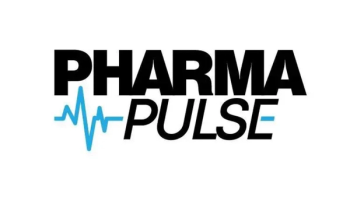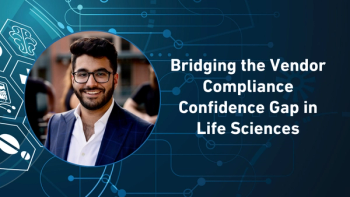Pharmaceutical Commerce: FDA staff cuts have created a critical gap in adverse drug event (ADE) monitoring. With ADEs being the third leading cause of death in the United States,1 what role do you see AI playing in preventing these events, especially when up to 56% are considered preventable through faster detection?
Dipanwita Das: For decades, a highly dedicated team at the FDA has grappled with monitoring ADEs, a leading yet often overlooked cause of death and hospitalization in the United States. Even before recent 20% staff reductions, the sheer volume of global scientific literature—over 4.5 million articles annually—had overwhelmed human capacity for manual review across the industry, creating a critical bottleneck impacting public safety. While Generative AI (GenAI) hype abounds, drug safety offers an immediate, transformative application that can have material benefits for public health today.
Pharmacovigilance teams, which are currently failing to keep up with the data volume and their safety requirements, can deploy these AI technologies today for rapid detection and remediation of safety issues.
Medically-tuned AI has already shown stunning results in literature review for safety and efficacy: our published studies with Moderna and Coherus2 demonstrated an 88% to 92% reduction in human review time, a jump in accuracy from 89.2% to over 96.1%, and data indexing in minutes versus months. AI continuously monitors vast, multi-lingual literature, extracting and contextualizing safety signals and going beyond keywords to suggest causality.
This efficiency, unattainable by human teams of thousands, frees highly credentialed FDA staff and pharma safety teams to conduct sophisticated signal validation and risk mitigation. By accelerating ADE detection, AI directly enhances patient safety and upholds the rigorous standards that make FDA approvals globally respected and the key step for global commercialization of novel drugs. However, challenges like hallucinations, bias, and secure processing of sensitive health information remain key adoption blockers in using commercial off-the-shelf AI solutions.
Key Takeaways
- Medically tuned AI systems can reduce literature review time by over 88%, boost accuracy beyond 96%, and detect safety signals months faster than manual methods, helping prevent adverse drug events (ADEs) more effectively.
- By handling overwhelming data volumes from global literature and real-world sources, AI enables regulatory and pharma teams to focus on high-value tasks like risk mitigation and complex signal validation.
- Responsible, GxP/GvP-compliant AI systems—designed in alignment with evolving FDA/EMA standards—are critical. Successful integration depends on strong partnerships between tech providers, regulators, and pharma.
PC: The volume of medical literature overwhelming current processes is exceeding two million publications annually. How does Sorcero’s AI handle this data overload to detect safety signals faster and more reliably?
Das: Sorcero Safety, developed in partnership with scientific publisher Springer Nature, is designed to tackle the colossal flood of medical literature with cutting-edge Agentic and GenAI. This platform acts as an always-on intelligence agent, meticulously ingesting and analyzing vast unstructured scientific data from global sources like publications, clinical reports, and regulatory submissions. Sorcero's Agentic AI intelligently discovers information on adverse events, drug interactions, and dosages, grading evidence quality and grounding potential hallucinations. GenAI then synthesizes these findings for deeper insight.
Unlike older systems, Sorcero’s Agentic AI, trained on decades of Springer Nature’s validated pharmacovigilance datasets and understanding over 15 million biomedical concepts, builds a profound contextual understanding, accurately discerning patterns and signals across varied terminology and languages. The platform’s relentless, high-throughput processing ensures immediate analysis of new publications, slashing detection time from months to minutes, while cutting the gap between literature release and signal identification by up to five months. With hundreds of millions of publications managed via an identity graph that eliminates deduplication, Sorcero’s Agentic AI intelligently prioritizes critical signals.
This automation drastically reduces manual burden, allowing human experts to focus on high-value investigation and strategic decision-making. By integrating these powerful AI capabilities, Sorcero's platform transforms pharmacovigilance from reactive and manual to proactive, automated, and reliable for global safety signal detection.
PC: Regulatory compliance is a major hurdle in drug safety. What protocol is required in order for software companies to ensure that their AI solutions are GxP/GvP-compliant, while also aligning with evolving FDA and EMA standards?
Das: Regulatory compliance presents a significant hurdle for drug safety AI, often complicated by siloed global compliance efforts and conflicting regulations, such as the EU’s “right to be forgotten” versus FDA data retention requirements for mandatory reports. To navigate this complexity, Sorcero, in partnership with USDM Life Sciences and Google Cloud, released “A Comprehensive Guide to Responsible AI for Life Sciences.”
This guide addresses the intersection of GxP, GVP, and privacy standards like GDPR and the EU AI Act. Sorcero’s platform leverages this framework to offer “compliant out-of-the-box” solutions. It maintains a robust, transparent audit trail with human oversight for GvP compliance and operates in a secure, globally privacy-compliant environment. This approach frees life sciences teams from converting rapidly changing regulations into technical requirements, ensuring compliance without long development cycles for internal AI builds.
PC: With all of this technology at our disposal, how do you envision the future of AI in pharmacovigilance over the next decade, in terms of its evolution?
Das: Over the next decade, AI will fundamentally transform pharmacovigilance, moving it from reactive to proactive and predictive, marking the most significant shift since digital submissions. Given AI’s current accuracy and speed improvements, we anticipate identifying and resolving major safety challenges in months or years, a stark contrast to the decades it previously took—like Zantac, which took 37 years from approval to withdrawal despite widespread and longstanding issues linked to hundreds of thousands of cancer cases and billions in settlements.
Future AI will leverage integrated, multi-modal data fusion, combining de-identified electronic health records, pharmacy data, wearables, and scientific literature for a holistic understanding of drug effects and personalized risk prediction. This will enable precision pharmacovigilance, anticipating ADEs for individuals and allowing tailored drug choices. Crucially, secure, containerized AI can tackle the massive underreporting of adverse events—an estimated 94% go unreported—providing unprecedented visibility and enabling rapid action. This will foster a truly intelligent, anticipatory system dedicated to patient well-being, enhancing global safety.
PC: When it comes to pharmacovigilance, can humans and AI successfully coexist?
Das: While AI's capabilities are transformative, its ultimate value in pharmacovigilance lies in its ability to augment, not replace, human expertise. Highly skilled professionals at the FDA and within pharmaceutical companies will remain indispensable. AI will free them from high-volume tasks, allowing them to focus on complex scientific judgment, critical thinking, and strategic decision-making, leading to safer drugs and better patient outcomes. The journey to fully leverage AI in drug safety is collaborative, requiring innovation from tech providers, proactive regulatory engagement, and adaptive strategies from pharma. The goal is a future where technology and human intelligence converge for a more resilient, responsive, and safer pharmaceutical landscape.
References
1. New Analysis Suggests Adverse Drug Events Are the 3rd Leading Cause of Death in the USA. Practical Neurology. March 26, 2025. https://practicalneurology.com/news/new-analysis-suggest-adverse-drug-events-are-the-3rd-leading-cause-of-death-in-the-usa/2473820/
2. AI Under the Hood: What Natural Language Processing (NLP) Means for Pharma. https://4324860.fs1.hubspotusercontent-na1.net/hubfs/4324860/Sorcero%20-%20DIA%20Poster%20(Moderna%2c%20Coherus)%206_22.pdf






